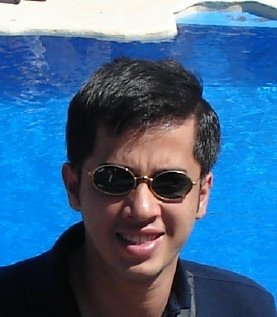Rotterdam - the City of Architecture 2007
 'Rotterdam is increasingly to architecture what Paris is to fashion or Los Angeles is to entertainment.'
'Rotterdam is increasingly to architecture what Paris is to fashion or Los Angeles is to entertainment.' Rotterdam has always been known for its architecture. In 1898, when the White House was completed, it became the tallest building in Europe.
It was devastated completely by the Germans in the second world war. The bombing of the city which hardly left anything left made the Dutch surrender in one day. The city was totally rebuilt after the war and it took almost 25 years for the same.
Architect Piet Blom was commissioned to create a bridge between Blaak and the Oude Haven in an unusual way.
He came up with the Cube Houses. Initially 55 Cubes were planned, however, only 39 were built later on request of the construction company. Each of the cubes is a three storied house with people actually staying in them. One of them is set up as a museum and can be visited for 1.8 euros. One of these houses can be purchased for 200,000 Euro (250000 euros for one with a proper view).
One of many nicknames for these buildings is "blaakse bos" which means "Blaak woods". The name comes from the nearby Blaak metro/train station and the form of the houses wherein the cubes on top of poles look like trees. This also gives it its other nickname - "Paal woningen" meaning ‘Pole dwellings’.


Schouwburgplein
Flanked by the municipal theatre, concert hall and central station, Schouwburgplein occupies a prominent site in the centre of Rotterdam.
The square itself consists of a mosaic of linear bands of wood, perforated steel panels and epoxy resin coated concrete - all of them reflecting traditional Dutch field patterns.
However, most spectacular of all are a quartet of 35m tall hydraulic lighting masts, lined up along the east side of the square. Inspired by the cranes in Rotterdam's huge docks, these red oxide structures are fitted with spotlights at the tips of delicately tapering cantilevered arms. The position of the lights was originally controlled by inserting a coin; now they contort at random, like inquisitive robots.

The Erasmus Bridge is a 2,600-foot cable stayed bridge linking the north and south of the city.
It is held up by a 138-meter tall pylon with a characteristic bend, earning the bridge its nickname "De Zwaan" ("the Swan").
 The same bridge from down under
The same bridge from down under The Metro station at Blaak -
The Metro station at Blaak -The roof is suspended from a massive steel arch into which two colours of neon light have been fitted. If blue is on, then the train is travelling in the direction of the river. If it is green, then the train is heading for the city.
Rotterdammers have nicknamed the station ‘the kettle’.
 Bibliotheeken and 'The Pencil' in the background.
Bibliotheeken and 'The Pencil' in the background.The Central Library consists of more than the largest library in Netherlands - it has amusement centres, restaurants, and shopping centres.
The yellow pipes are for supplying fresh air to the inside and they stand out agains the white walls. These pipes have earned nicknames like 'vacuum cleaner' and 'tube baby'.
The building in the background ('Het Potlood' or 'The Pencil') is also a famous work of architecture.

A little further is the old harbour (Oude Haven).
Covering 105 square kilometers, the port of Rotterdam now stretches over a distance of 40 kilometers :-O. It is the largest port of Europe and from 1962 to 2004 it was the world's busiest port (Shanghai holds the honour now)
 Westersingel - the high class area.
Westersingel - the high class area.

= = =
Addendum: There is a rumour that during WW-II, aparently, the German aircrafts mistook Rotterdam for Amsterdam. It was only after they pounded the city completely, and return home did they realise their folly.
I however think that the Germans were not mistaken - Rotterdam is right in the middle of land everywhere & Amsterdam is besides a big sea inlet. As an invading country, I would have kept the best city for myself and bombed the second best city to coerce the country to submission.






1 comment:
Hi! I’m the Community Manager of Ruba.com. We’re building a website to highlight some of the most interesting places travelers around the world have discovered. We’ve read hundreds of blogs about the Netherlands and we think that yours is awesome! We’d love to highlight excerpts from your blog (assuming it’s OK with you of course) and to discuss other ways of tapping into your expertise if you are interested. I’m at erin[at]ruba.com.
Thanks! :)
Post a Comment